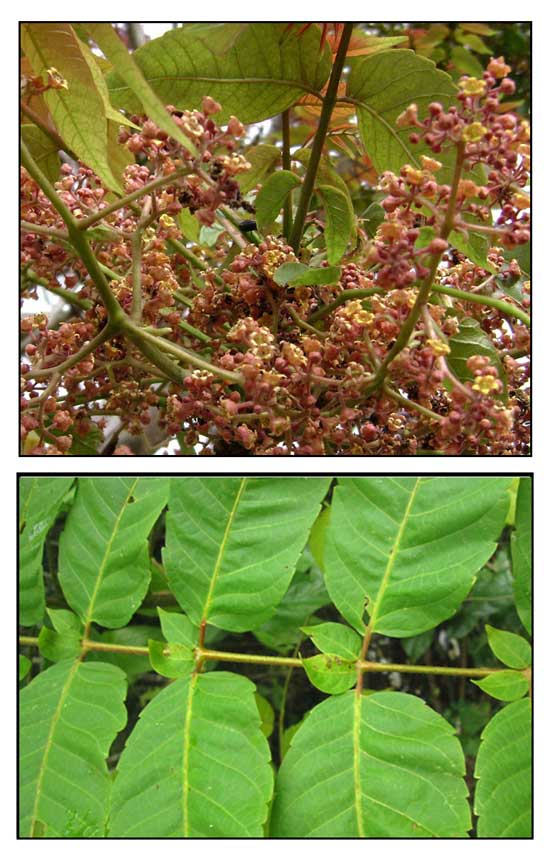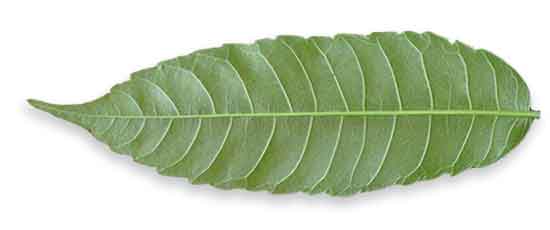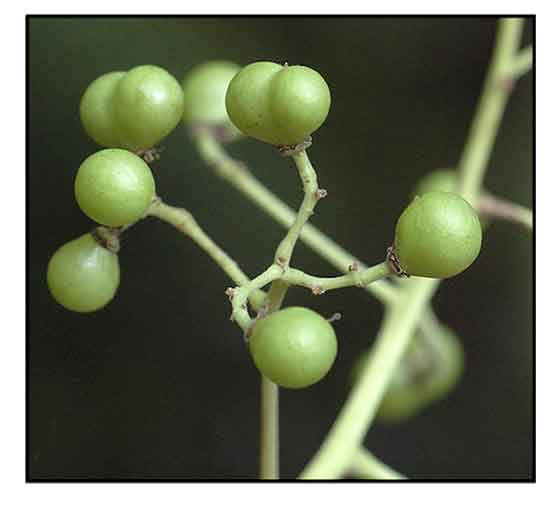 Gen info Gen info
- Garuga is a genus of shrubs and trees in the incense or torchwood family Burseraceae.
-
A bogo tree stands in front of the Bogo Cityhall in St. Joseph Village, Bogo City, Cebu. Oral history narrates that early inhabitants of Bogo did trade from under this tree with people from neighboring provinces of Leyte, Masbate, Negros, etc. (3)
Botany
• Bogo is a deciduous, small to medium sized, occasionally large, tree growing up to 30 meters high. Bole is straight, cylindrical, unbranched up to 12 to 20 meters, with a diameters of up to 120 centimeters and buttresses up to 3 meters high. Bark has flaking and fissured, gray or gray-white in color; inner bark is rubbery and pink. Leaves are fugacious, odd-pinnate, alternately along the branches, and crowded at the apex of twigs. Leaflets are oppositely arranged along the rachis, oblong-lanceolate, crenate-serrate. Flowers are in axillary panicles, bisexual, with a copular receptacle. Sepals are free. Petals have inflexed tips. Stamens are inserted on the margin of the receptacle. Ovary is superior, five locular with two ovules in each cell. Fruit is a drupe, blue, fleshy, with one to five one-seeded pyrenes.
• G. floribunda is a deciduous, moderately slow growing, medium to large tree to 15-35 m tall. In favorable situations the bole may attain 1.3-1.5 (- 2.2) m diameter at breast height (dbh) above buttresses. The crown is spreading, with a feathery appearance, and may be irregularly-shaped, domed or flat-topped. In forest situations the bole is generally long, straight and cylindrical, but short and crooked in the open. Leaves large, pinnately compound, and crowded in dense spirals at the ends of the branches. Leaflets are arranged in 4-15 pairs along the rachis, with or without a terminal leaflet. The leaf rachis is slightly swollen at the base and up to 35 cm long. Each leaflet is shortly petiolate, somewhat obliquely narrowly ovate to ovate, 38-100 x 11-31(38) mm, lanceolate around the base, margins entire or crenate, gradually tapered to a longacuminate apex, mid to dark green and shiny above; dull light green and velvety hairy below. Stipules are present at the base of each leaflet, up to 10 x 3 mm, pointing towards the base of the leaf, usually falling as the leaf matures. Flowers bisexual, in terminal branched erect panicles, up to 15 cm long, conspicuous, with light pink and yellow petals, borne on otherwise bare branches. Fruits in large clusters born in drooping panicles, held clear of the foliage, somewhat globular to obovoid, 10-15 mm across, green ripening to greenish-blue or purple-black. Bark light grey brown to grey, smooth with wide evenly spaced conspicuous lenticel protrusions on young trees. With age the bark on the lower bole becomes rough and scaly. The inner bark is pink to red brown in distinct layers grading to white on the wood. When damaged a slight clear to milky, slightly resinous-scent. (8)
Distribution
- Native to the Philippines.
-
From northern Luzon to Palawan and Mindanao, in thicketes and seconday forests.
-
Nowhere abundant.
- Occasionally planted as a shade tree or as a liviing fence.
- Also native to Assam, Bangladesh, Borneo, China South-Central, China Southeast, East Himalaya, Hainan, Jawa, Laos, Lesser Sunda Is., Malaya, Maluku, New Guinea, Queensland, Samoa, Solomon Is., Sulawesi, Thailand, Tonga, Vanuatu, Western Australia. (2)
 Constituents Constituents
- Phytochemical analysis of stems yielded alkaloids, saponins, tannins, oxalic acid, formic acid, tartaric acid, fats and oils. (3)
- Study of seed oil for fatty acid profile
yielded linoleic acid as most abundant, along with oleic acid and minor amounts of cyclic fatty acid, dihydrosterculic acid. (6)
- Phytochemical screening of stems and leaves yielded terpenoids, polyphenols, flavonoids, anthraquinones, with absence of alkaloids. (5)
Properties
- Leaves are astringent.
- Studies have suggested antimalarial and free radical scavenging activities.
Parts used
Bark, leaves, roots.
 Uses Uses
Edibility
- Fruit reportedly edible.
Folkloric
- Decoction of bark used after childbirth.
- Bark mixed with sambulawan used to treat scabies or itchiness, boils, abscesses, fungal diseases.
- In India, leaf used in the treatment of asthma; fruit used for dysentery; bark applied to eye disorders and wounds; roots used for skin or venereal disorders. (3)
- In Malaka, West Timor,
bark used for the treatment of malaria by the Tetun ethnic people. (7)
- In Vanuatu, inner bark used to treat stomachaches and infected cuts.
Others
- Wood: Used for general construction, posts, flooring, furniture, cabinetry, moldings, shelvings, agricultural implements, toys, turnery, and the production of veneer and plywood.
- Fodder: Leaves used for fodder.
- Dye: Black dye from leaf decoction used to color leaf mats from Corypha.
- Fuel: Wood provides a hot-burning fuelwood in Vanuatu.
- Agroforestry: Potential for reforestation or enrichment plant in degraded, over-logged or cyclone-damaged forests.
Studies
• Free Radical Scavenging: Study evaluated 80% ethanol extract of leaves and stems of three plants, viz., Garuga floribunda, Ochrosia akkeringae, and Tabernaemontana pandacaqui for in-vitro free radical scavenging activity by DPPH assay. Garuga floribunda leaf extract showed the lowest IC50 at 6.68 ppm compared to vitamin C with 3.11 ppm. A low IC50 has potential for development as medicinal drug. (4)
• Antimalarial
/ Leaves: Study evaluated twenty extracts from leaves and stems from Indonesian plants for in vitro antimalarial activity against P. falciparum 3D7 strain (chloroquine-sensitive) using HRP2 assay. Two leaves extracts showed activity as antimalarial, viz., Garuga floribunda and Alectryon serratus with IC50 values of <14.8 µg/ml and 15.5-30.9 µg/ml, respectively. The extracts were rich in substances known to have antimalarial activity, such as terpenoids, polyphenol, flavonoids, and anthraquinone. (5)
• Prevention or Treatment of Hearing Loss
/ Invention: Invention related to a composition for prevention or treatment of hearing loss, containing a Garuga floribunda extract as active component. The extract claims it can effectively inhibit an increase of hearing threshold by hardness of hearing and hair cell damage caused by use of antibiotics, and treat or alleviate hearing loss, in particular, ototoxic hearing loss. The composition is proposed for use as a pharmaceutical or functional health food. (9)
Availability
- Wild-crafted.
|

![]()



 Gen info
Gen info

